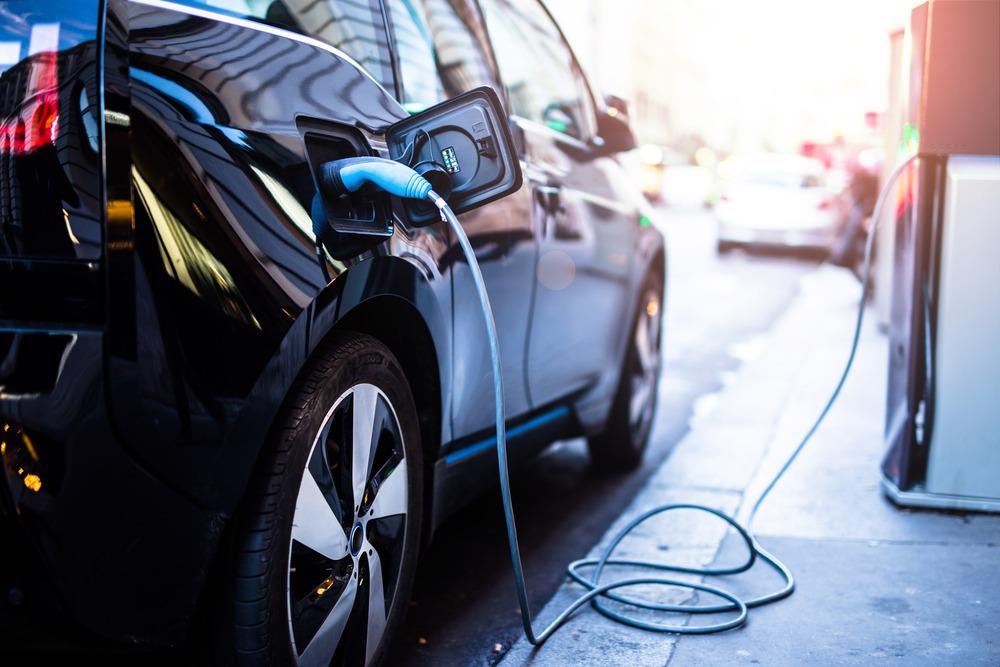In a recent study published in the journal Applied Materials and Interface, researchers from China developed new solid electrolytes (SEs) for lithium-ion batteries to improve battery tolerance under adverse conditions and maintain bipolar cell stacking.

Study: High-Power Bipolar Solid-State Batteries Enabled by In-Situ-Formed Ionogels for Vehicle Applications. Image Credit: guteksk7/Shutterstock.com
Lithium-ion Batteries
Lithium-ion batteries (LIBs) are used in rechargeable energy storage systems, electric vehicles, plug-in hybrid-electric cars, and hybrid power systems. They have advantages such as long cycle life, high energy density per weight, and high power capability.
In modern LIBs, organic liquid electrolytes (LEs), cyclic carbonates, and linear carbonates are used to improve battery performance. These LEs are flammable and volatile, due to which they can only be used in specific temperature ranges. Additionally, the LEs also affect the battery's tolerance under adverse conditions such as overheating, crushing, nail penetration, mechanical impact, overcharging, and short circuit.
In the recent study, a bipolar solid-state batteries (SSB) pouch cell with two cell units was developed that aided in overcoming the limitations of LEs. The developed SSB was made of unit cells connected in series and tested for short circuits and adverse operating conditions.
Methodology
In the current study, LiMn2O4 (LMO)/ Li4Ti5O12 (LTO) bipolar electrode, Li7La3Zr2O12 (LLZO) solid electrolyte layer, ionogel, and two-unit cells were used for constructing high-power bipolar SSB.
The ionogel was made using a simple gelation method. During which, a specific amount of polyvinylidene fluoride-hexafluoropropylene (PVDF-HFP) powder was first dispersed into a dimethyl carbonate (DMC) solvent. Then the PVDF-HFP solution was then mixed with the triethyl phosphate (TEP) to make a transparent ionogel precursor solution. Further, the ionogel precursor solution was kept at room temperature for two hours to evaporate the DMC solvent. Finally, a non-flowing, transparent ionogel containing PVDF-HFP was developed.
The anode, cathode, and bipolar electrodes were prepared in a dry room with a dew point below 50 °C. LMO, conductive carbon, and polyvinylidene fluoride (PVDF) were uniformly mixed in the N-methyl-2-pyrrolidinone solvent to develop a LiMn2O4 (LMO) cathode. Further, an ionogel precursor solution containing DMC solvent, TEP, and PVDF-HFP was sprayed onto the cathode and anode surfaces to develop SSB cell units.
Two cell architectures with a Li7La3Zr2O12 (LLZO) solid electrolyte with separating layers were constructed in laminated aluminum pouches. The use of laminated aluminum pouches developed a basic cell architecture of SSB, which was critical in determining cell performance during various experiments. Finally, the bipolar SSB LMO/LLZO-LTO battery with the ionogel was developed by researchers.
The researchers also performed ionic conductivity tests, viscosity measurements, Raman spectra analysis, energy-dispersive X-ray spectroscopy (EDX), and electrochemical impedance spectroscopy (EIS) to characterize the as-produced battery.
Results
EDX elemental mapping demonstrated that layers of the Al foil current collector, LMO composite cathode, LTO composite anode, and LLZO separating layers had high wettability and penetrability.
The scanning electron microscope (SEM) mapping revealed that the ionogel added a thick LMO electrode, which ensured high penetrability and wettability of SSB. The results of SEM further indicate the feasibility of the fabrication process used by researchers to develop the SSBs.
The electrochemical performance demonstrated the superiority of the LMO/LLZO-LTO cell architecture over the conventional battery architecture. Further, the study also indicated that the LLZO solid electrolyte separating layer was electrochemically compatible with both the LMO cathode and the LTO anode.
The addition of the TEP solvent significantly reduced the viscosity and increased the ionic conductivity of the ionogels. The triglyme Li complex cations were stable after dilution with TEP at a lithium salt concentration of 1.2 mol/L.
It was also observed that cells without the ionogel had an extremely high charge transfer resistance, which was reduced after the ionogel was introduced. This comparison showed that the ionogel could develop solid-solid contacts in a bipolar solid-state battery and reduce interfacial resistance.
The LMO/LLZO-LTO bipolar SSBs also demonstrated excellent tolerance under harsh operating conditions, which was confirmed by the cutting, folding, and burning tests. The bipolar cell developed by researchers exhibited superior power capability and could meet engineering cold crank requirements. It was also observed that the LMO/LLZO-LTO bipolar SSB stacked in a pouch cell without any short circuits or current leakage. Additionally, the bipolar cell with uniformly distributed ionogel demonstrated high-rate capability even at five columns of charge.
Conclusions
The results of the present study suggest that the strategy proposed by the researchers has the potential to develop high-performance and advanced SSBs. Future studies should focus on comprehensive research to improve the cold-cranking capability and cycling performance of the SSBs.
Disclaimer: The views expressed here are those of the author expressed in their private capacity and do not necessarily represent the views of AZoM.com Limited T/A AZoNetwork the owner and operator of this website. This disclaimer forms part of the Terms and conditions of use of this website.
Source:
Zhe Li, Yong Lu, Qili Su, Meiyuan Wu, Xiaochao Que, and Haijing Liu ACS Applied Materials & Interfaces 2022 14 (4), 5402-5413. High-Power Bipolar Solid-State Batteries Enabled by In-Situ-Formed Ionogels for Vehicle Applicationshttps://pubs.acs.org/doi/abs/10.1021/acsami.1c22090